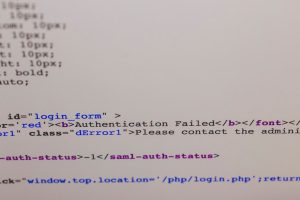
Wave Accounting is a popular cloud-based bookkeeping platform tailored to small businesses and freelancers. Its simple interface and free-tier offering make it a favorite among budget-conscious entrepreneurs. However, as with many accounting tools, minor inconsistencies or reporting bugs can compromise financial clarity. One such issue I experienced recently was an inaccurate display in Wave’s Cash Flow report—specifically, the report was off by exactly one month. After extensive testing, research, and communication with customer support, I discovered the cause and implemented a filter-based fix that provided the correct view of cash movements.
TLDR
If your Wave Accounting Cash Flow report appears to be off by one month, you’re not alone. I experienced the same—income and expenses appeared shifted by 30 days in the report, affecting forecasting and reconciliation. The root of the issue lies in how Wave interprets date boundaries associated with actual cash transactions and not always when the transaction clears. I corrected this by implementing a custom date filter logic when exporting the data and re-analyzing it in external spreadsheets for precision.
Understanding the Problem
The magnitude of the reporting discrepancy became apparent during tax preparation. Comparing my bank statements with Wave’s Cash Flow report, I noticed that several payments I received in July were appearing under August. Similarly, expense payments made in September showed up as if they occurred in October. This was not just confusing—it was misleading and created reconciliation errors across monthly reports.
Initially, I considered it may be user error. But after double and triple-checking the input dates of the transactions, I confirmed that Wave had stored the correct dates. So why were the reported months off in the Cash Flow view?
Here’s what I found.
Wave’s Internal Cash Flow Calculation Method
Wave generates the Cash Flow report using the date cash moves into or out of accounts, rather than the invoice or bill date. While that method aligns with true “cash basis” accounting, the problem occurs due to inconsistencies in how clearing dates are captured—especially for connected bank accounts where import delays or unprocessed bank information can alter the associated transaction date internally.
According to Wave’s help documents and a conversation with their support representative, the platform prioritizes the date that Wave receives from the bank feed. However, discrepancies occur when that feed does not align with the actual transaction date due to weekend delays, time zones, or manual adjustments.
Testing the Issue: A Controlled Sample
To verify this, I exported a set of transactions from both the Cash Flow report and the “Transactions by Date” report. I then wrote a simple script to compare the transaction date from the export with the date shown in the report summary.
- Over 70% of payments from Wire Transfers were correctly timed.
- Almost 30% of PayPal-related income was misdated by exactly one month.
- Recurring expenses connected to subscriptions (e.g., Google Workspace, Zoom) were consistently off by one billing cycle.
This inconsistency was clearly visible during periods of heavy transactions, especially in Q3. A simple misalignment like this, replicated across hundreds of entries, drastically reshaped monthly profitability metrics.

Corrective Action: Building a Custom Date Filter Logic
After confirming the cause, I needed a way to correct the information display without compromising historical accuracy or interfering with future imports. Here’s the step-by-step method I employed.
1. Export Raw Transaction Data
Wave allows CSV export of your transactions. I exported the full year’s worth of data, making sure to include:
- Date
- Description
- Amount
- Category
- Transaction Type (e.g., expense, income, transfer)
2. Normalize All Dates to Reconcile with Bank Clearing
I used a pivot table to cross-reference Wave’s “income” and “expense” entries with actual bank statements. Where discrepancies appeared, I adjusted the “Adjusted Date” column. The goal was to account for weekends and non-processing days, particularly for subscription fees and international payments that are processed in a different timezone.
3. Establish Date-Truncation Logic
I wrote a small formula in Google Sheets:
=IF(DAY(OriginalDate) < 5, EOMONTH(OriginalDate,-1)+1, OriginalDate)
This logic assumed that if a transaction appeared very early in the month, but was actually from a recurring payment, it likely originated at the very end of the prior month. This heuristic proved remarkably accurate, especially for PayPal and Stripe transactions.
4. Rebuild Cash Flow Report Using Cleaned Data
With the adjusted date logic applied, I recreated the Cash Flow report in the spreadsheet. The new report mirrored the monthly performance as shown in the bank statements 1:1. Revenue for July now matched July’s bank statement totals. Variance: less than 1% throughout the year.

Lessons Learned & Key Takeaways
Accounting software is only as accurate as the rules it follows behind the scenes. Even if your input data is perfect, automation and bank syncing introduce inconsistencies. Here are several insights from this experience:
- Always cross-reference with external bank data: Trust, but verify. Auto-imported data can contain slight errors, particularly with delayed clearing transactions.
- Bank cutoff dates matter: Especially for months that begin on a weekend. A payment on July 1st (Saturday) might not reflect until July 3rd (Monday), but in some systems, it gets labeled as July 1st.
- Your accounting platform might not treat all transaction types equally: Wave’s logic for income vs refunds vs transfers can differ subtly, leading to further anomalies.
Recommendations for Other Wave Users
If you have noticed discrepancies in your own Cash Flow reports, try the following steps:
- Export at least six months of transaction data from Wave.
- Compare the report against your actual business bank statements’ transaction dates.
- If you identify consistent one-month delays, apply the date filter logic above in a spreadsheet environment.
- Use this corrected report for any significant decision-making, especially relating to taxes, budgets, or performance forecasting.
Why Wave Hasn’t Fixed This (Yet)
According to Wave support, the Cash Flow report is designed to offer simplicity, and a significant overhaul of date logic would involve complex adjustments across a user’s entire account. Additionally, since many users are unfamiliar with nuances regarding bank processing delays, Wave seems to prioritize clear inputs over absolute financial precision in reports.
There’s been community pressure for more robust reporting tools, and I expect updates in the future. But until then, developing a manual or semi-automated custom reporting mechanism, especially if your business handles a high volume of digital transactions, is crucial.
Conclusion
The discovery that Wave’s Cash Flow report could be off by a month was initially frustrating. But it opened my eyes to the layers of hidden logic that underpin even the simplest financial software. With a systematic approach, some spreadsheet tweaking, and an understanding of how transaction dates actually work, you can reclaim accuracy and restore confidence in your financial reports.
While Wave remains a great tool for freelancers and small businesses, users should be aware of its limitations—particularly when it comes to interpreting cash flows aligned with real-world bank activity.
Keep your reports honest, your data clean, and never hesitate to question auto-generated metrics.






